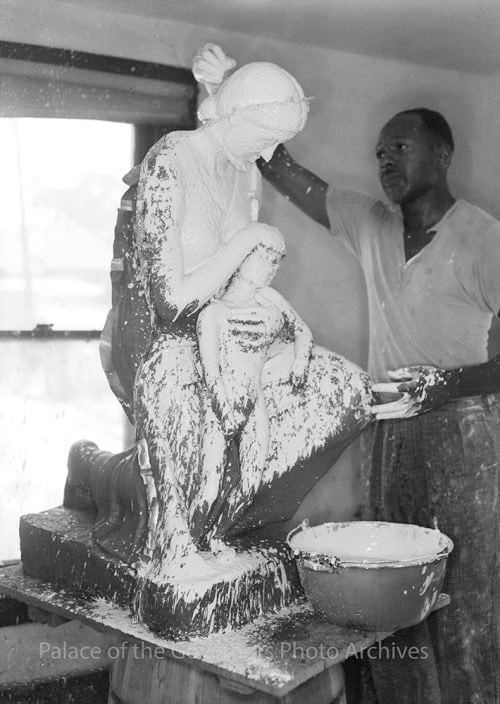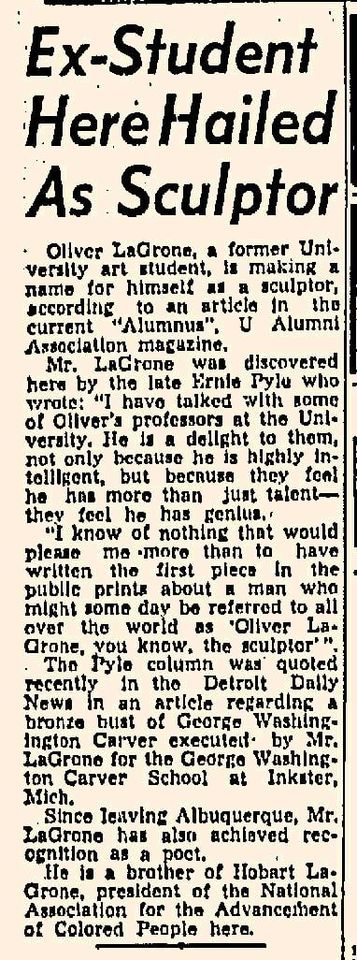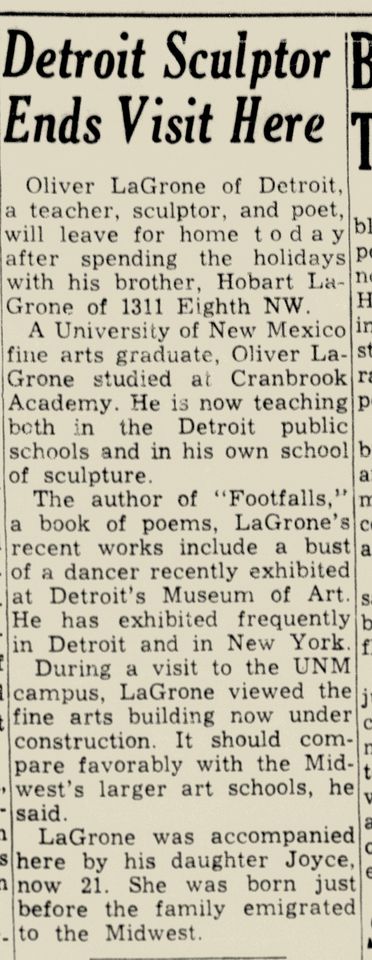
Oliver LaGrone (1906-1995), younger brother of Hobart LaGrone, is a nationally-recognized artist, educator, and poet. After moving with his family from the Midwest to Albuquerque in the early 1930s, Oliver LaGrone quickly became involved in his community. In 1933, both Oliver and Hobart became members of the first African American Boy Scout troop in Albuquerque. Oliver was also the director and member, along with Hobart, of the Harmony Four, a quartet that regularly sang at the Grant Chapel African Methodist Episcopal (AME) Church, where they were also members with their family.

Oliver LaGrone began his studies at the University of New Mexico, and refined his skills in the fine arts. In 1936, the WPA hired Mr. LaGrone to create a sculpture for the future Carrie Tingley Hospital for Crippled Children in Hot Springs, NM. Upon graduating from UNM in 1938 with a Bachelor of Science degree, Mr. LaGrone met and married Irmah Cooke and moved to Michigan shortly thereafter, though he moved back to Albuquerque briefly in 1977.
Oliver LaGrone continued making sculptures throughout his life, while he worked as a representative for the American Federation of Labor (AF of L) in Detroit’s auto industry, while he worked as a teacher in Detroit public schools, and throughout his tenure as a faculty member at Pennsylvania State University.
Oliver LaGrone was also known for his activism and wrote poetry on Black history, identity, and the fight for civil rights in the United States. His sculptures can be seen at the Albuquerque Museum sculpture garden, the Schomberg Center at the New York Public Library, and Pennsylvania State University, among other locations.

